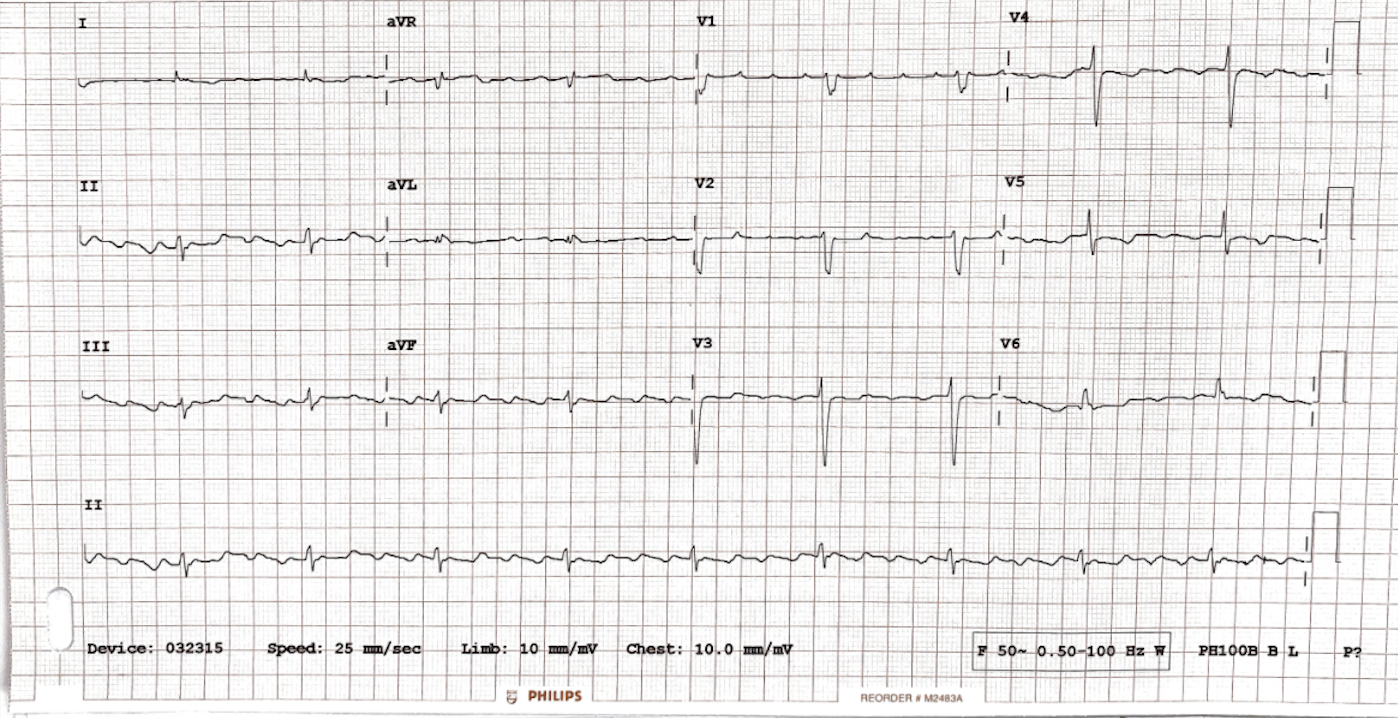A 62 yo woman presents to the emergency department with palpitations. She has a past medical history of hypertension.
Her examination is normal.
Vitals on arrival are: Afebrile, heart rate 70bpm, BP 90/42
An ecg is done and is shown below.
What is the diagnosis?
Her examination is normal.
Vitals on arrival are: Afebrile, heart rate 70bpm, BP 90/42
An ecg is done and is shown below.
What is the diagnosis?
This is atrial flutter. It is the second most common tachy-arrhythmia after atrial fibrillation
It is a macroreentrant atrial tachycardia with the loop above the AV node in the right atrium.
- type 1 flutter is the most frequent.
- In this type of flutter, right atrial activation rotates in a counterclockwise direction.
It usually produces a narrow complex tachycardia, with a classic sawtooth pattern best seen in lead II.
It can conduct as
- 1:1, which can be unstable
- 2:1, which is the most common
- 3:1
- 4:1
- It can also be variable which gives the appearance of an irregular rhythm.
How do we best manage the STABLE patient?
How to best manage the UNSTABLE patient?
Who would you anticoagulate?
Remember that this arrhythmia will typically not revert with vagal manoeuvres.
How to best manage the UNSTABLE patient?
Who would you anticoagulate?
Remember that this arrhythmia will typically not revert with vagal manoeuvres.











